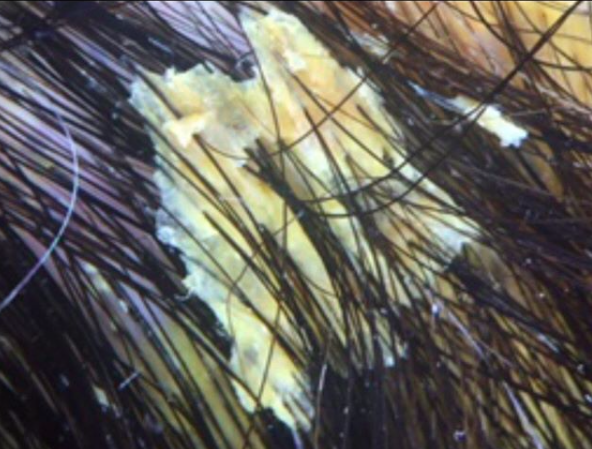Pityriasis Amiantacea: A Reaction Pattern Not A Diagnosis
Pityriasis amiantacea: Many Causes
Pityriasis amiantacea, also known as tinea amiantacea, is not a diagnosis. Rather it is a reactive phenomenon that sometimes happens during the process of scalp inflammation. The scalp responds by producing thick sticky (“asbestos-like) scale that wraps around hairs like shingles in a roof. The condition was first described in 1832.
The scales can be difficult to remove and often take out hairs when the scale is removed. Many different conditions can lead to the skin responding in a manner that produces the end result of pityriasis amiantacea.
So what are some of the causes of pityriasis amiantacea? Well, the finding of pityriasis amiantacea is often seen in patients with psoriasis, seborrheic dermatitis, fungal infections, various eczemas and many scarring alopecias.
The photo here is a magnified photo of the scalp of a patient with "pityriasis amiantacea" from seborrheic dermatitis.
Treatment includes identifying the root cause and treating that scalp condition or disease. Treatment such as topical steroids, steroid injections, anti dandruff shampoos, salicylic acid, tar all play a role in treatment. I view the treatment of pityriasis amiantacea as being somewhat urgent because this type of scale can lead to removal of hair and sometimes even chronic permanent hair loss if secondary infection and scarring are present. #pityriasisamiantacea #hair #scale#inflammation #hairclinic #trichoscopy
This article was written by Dr. Jeff Donovan, a Canadian and US board certified dermatologist specializing exclusively in hair loss.

